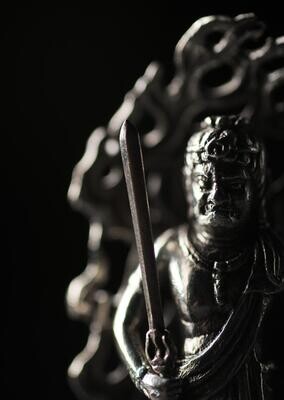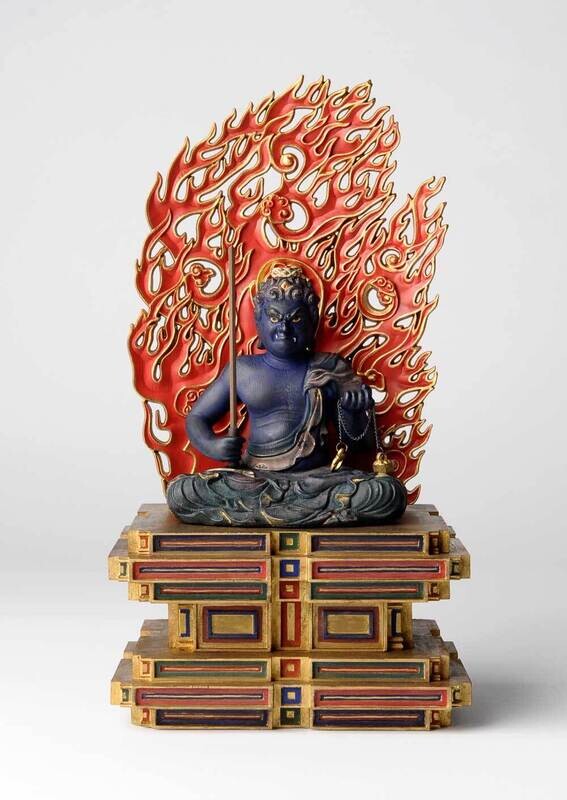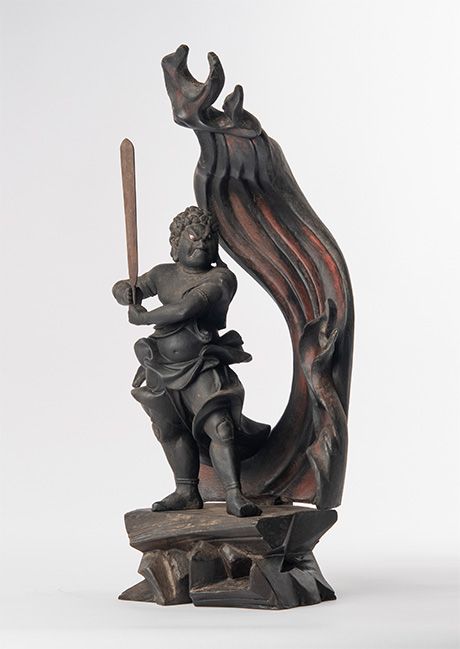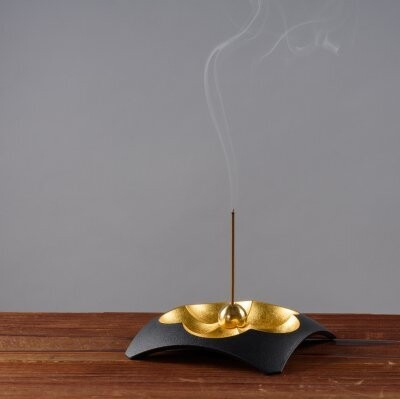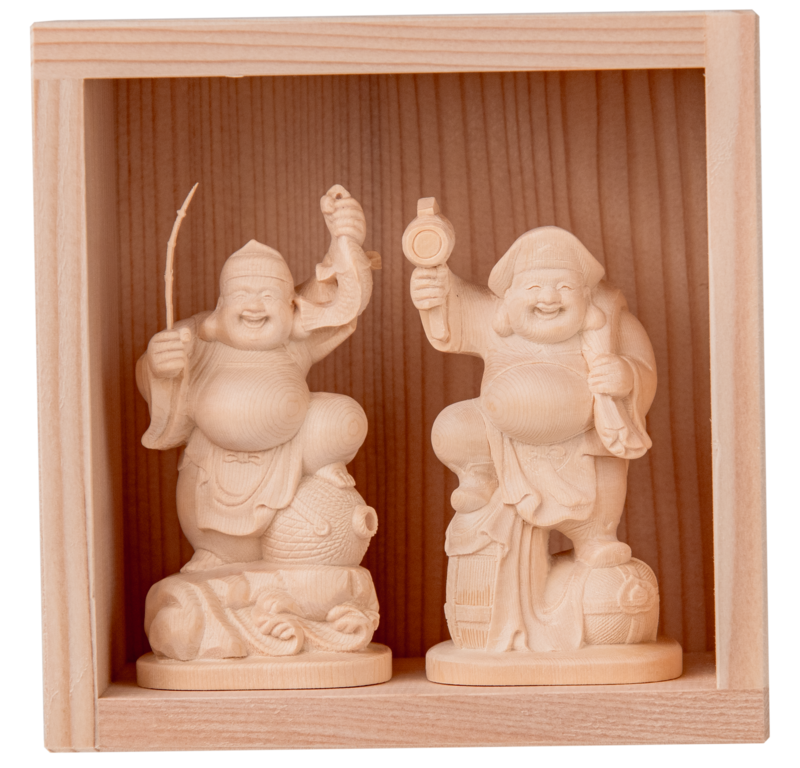Japanese Buddhist Statues: Masterpieces of Art, Spirituality, and Culture
The cultural tapestry of Japan is interwoven with threads of spirituality, history, and artistry. Within this rich tapestry, Japanese Buddhist statues stand as exceptional artifacts that embody the essence of these elements. Revered for their exceptional craftsmanship, profound symbolism, and spiritual significance, these statues transcend mere artistic creations to become vessels of wisdom, connecting the physical and the metaphysical. As we delve into the myriad facets that make Japanese Buddhist statues exceptional, we uncover a tapestry of cultural, spiritual, and artistic significance that resonates across generations
Artistic Craftsmanship: Preserving Beauty Through Mastery
Japanese Buddhist statues serve as exquisite examples of artistic craftsmanship. Behind each meticulously carved figure lies the dedication of skilled artisans who painstakingly sculpt, carve, and cast these statues using materials as varied as wood, bronze, and stone. The intricate facial expressions, hand gestures known as "mudras," and the delicate drapery of robes showcase the depth of skill and unwavering dedication of these craftsmen. It is through their artistry that these statues come to life, transcending the boundaries of time and space to communicate spiritual teachings through visual narratives.
Symbolism and Spiritual Depth: Carved Vessels of Wisdom
Every aspect of a Buddhist statue holds symbolic meaning and spiritual depth. The poses, attire, and attributes of these figures are not merely artistic choices; they encapsulate the wisdom of Buddhist teachings. With each representation, whether it be a serene Buddha, a compassionate bodhisattva, or an enlightened being, profound qualities such as compassion, wisdom, and enlightenment are embodied. Through these symbols, the statues serve as tangible manifestations of spiritual truths, inviting devotees and admirers to embark on inner journeys of self-discovery and enlightenment.
Historical and Cultural Significance: Echoes of Time
Japanese Buddhist statues bear the imprints of history, culture, and spirituality across the ages. Beyond their role as artistic masterpieces, they are a testament to Japan's ever-evolving cultural and religious narrative. Crafted over centuries, these statues reflect the fluidity of artistic styles, religious practices, and societal values. They stand as bridges between the contemporary and the historical, offering a glimpse into the profound connections that bind Japan's present to its past. As they stand in temples and shrines, these statues invite contemplation not only of their aesthetic beauty but also of the stories they carry through time.
Variety of Styles and Types: A Kaleidoscope of Spirituality
The diversity of Japanese Buddhist statue styles is a testament to the pluralistic nature of Buddhism itself. Influenced by various schools of Buddhism and regional variations, the statues offer a rich mosaic of spirituality and artistic expression. From the serene and meditative figures synonymous with Zen Buddhism to the intricate and vibrant depictions of Esoteric Buddhism, the range of styles showcases the dynamic nature of Buddhist practice and its ability to adapt to different cultural contexts.
Spiritual Practice and Devotion: Bridges to the Divine
Japanese Buddhist statues are more than static art pieces; they are conduits for spiritual practice and devotion. Practitioners find solace and inspiration in the act of gazing upon these statues, using them as focal points for meditation and contemplation. The rituals of bowing, offering incense, and reciting mantras or prayers create a profound connection between the mundane and the sacred. These statues serve as guides on the spiritual path, reminding devotees of the virtues they strive to cultivate.
Integration of Nature: Harmony with the Natural World
Japanese culture has a deep reverence for nature, and this reverence is seamlessly woven into the fabric of Buddhist statues. Many statues integrate elements of the natural world into their designs, using materials like wood and stone and incorporating motifs such as lotus flowers, leaves, and flowing water. This harmony with nature not only adds to the visual beauty but also serves as a reminder of the interconnectedness of all living beings and the importance of mindfulness in everyday life.
Architectural Context: Synthesis of Art and Architecture
Japanese Buddhist statues find their home within the sacred spaces of temples and shrines, creating a harmonious synthesis of art and architecture. Placed amidst the serene surroundings, these statues become integral parts of larger religious complexes. They contribute to the creation of a spiritual atmosphere, inviting contemplation and reflection for both worshippers and visitors. The interplay between the statues and their architectural context enhances the spiritual experience, inviting individuals to connect with something larger than themselves.
Continued Reverence and Preservation: Legacy of Wisdom
The reverence bestowed upon Japanese Buddhist statues is a testament to their enduring cultural and spiritual impact. They continue to inspire awe, reflection, and reverence across generations. Museums, religious institutions, and cultural organizations recognize the importance of preserving these masterpieces, ensuring that they remain accessible for future generations. In their continued preservation, these statues serve as living links to Japan's heritage, allowing people to touch the past while navigating the present.
In summary, Japanese Buddhist statues are not merely art objects; they are profound expressions of spirituality, culture, and artistry. Their exceptional craftsmanship, symbolism, and spiritual depth render them timeless conduits of wisdom. These statues encapsulate the essence of Japanese aesthetics, spirituality, and historical evolution. As bridges between the human and the divine, they inspire seekers worldwide to embark on inner journeys of self-discovery, enlightenment, and a deeper connection to the world around them. Through their beauty, teachings, and enduring legacy, Japanese Buddhist statues continue to guide and inspire humanity on its quest for meaning and purpose.
